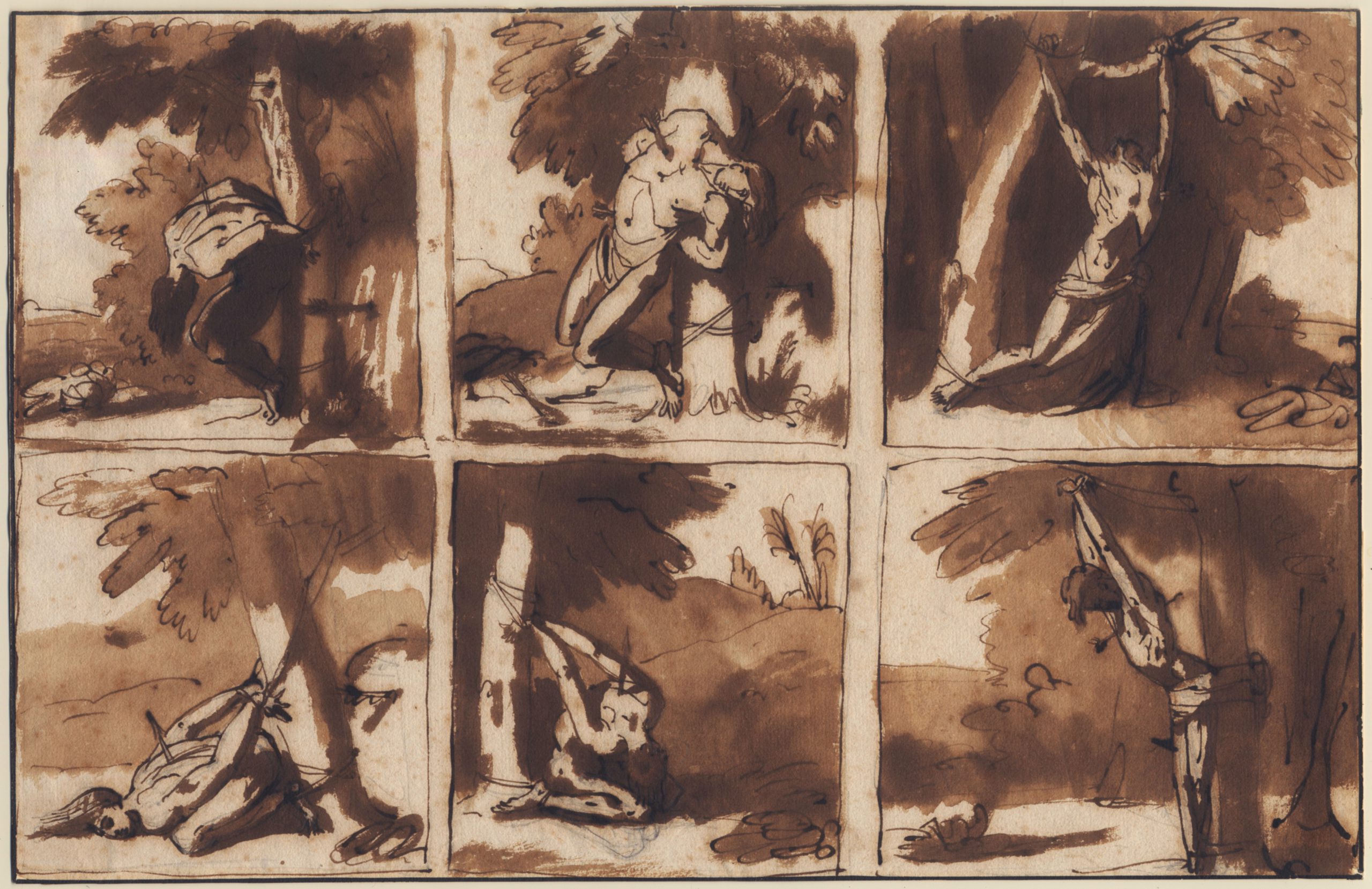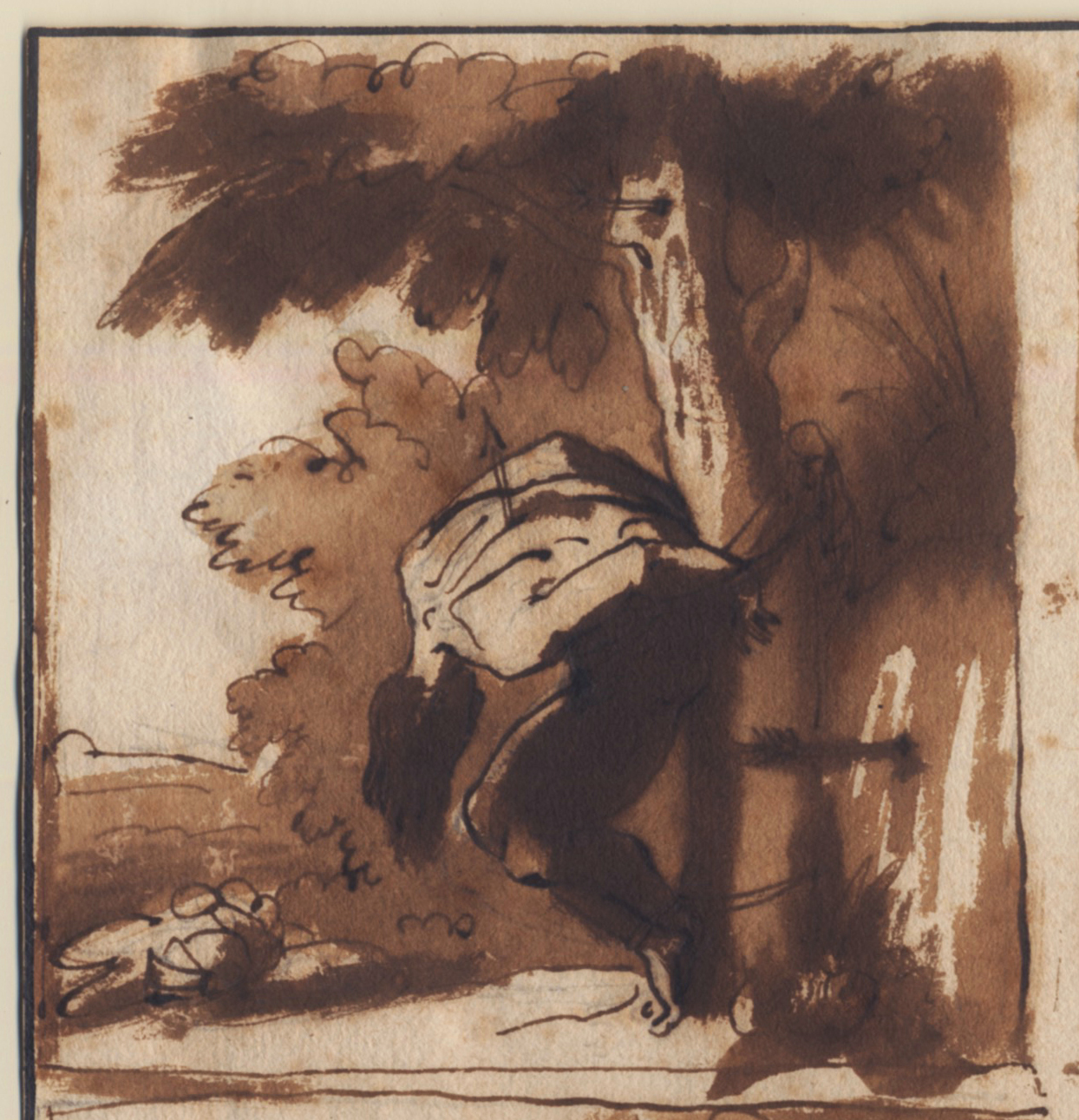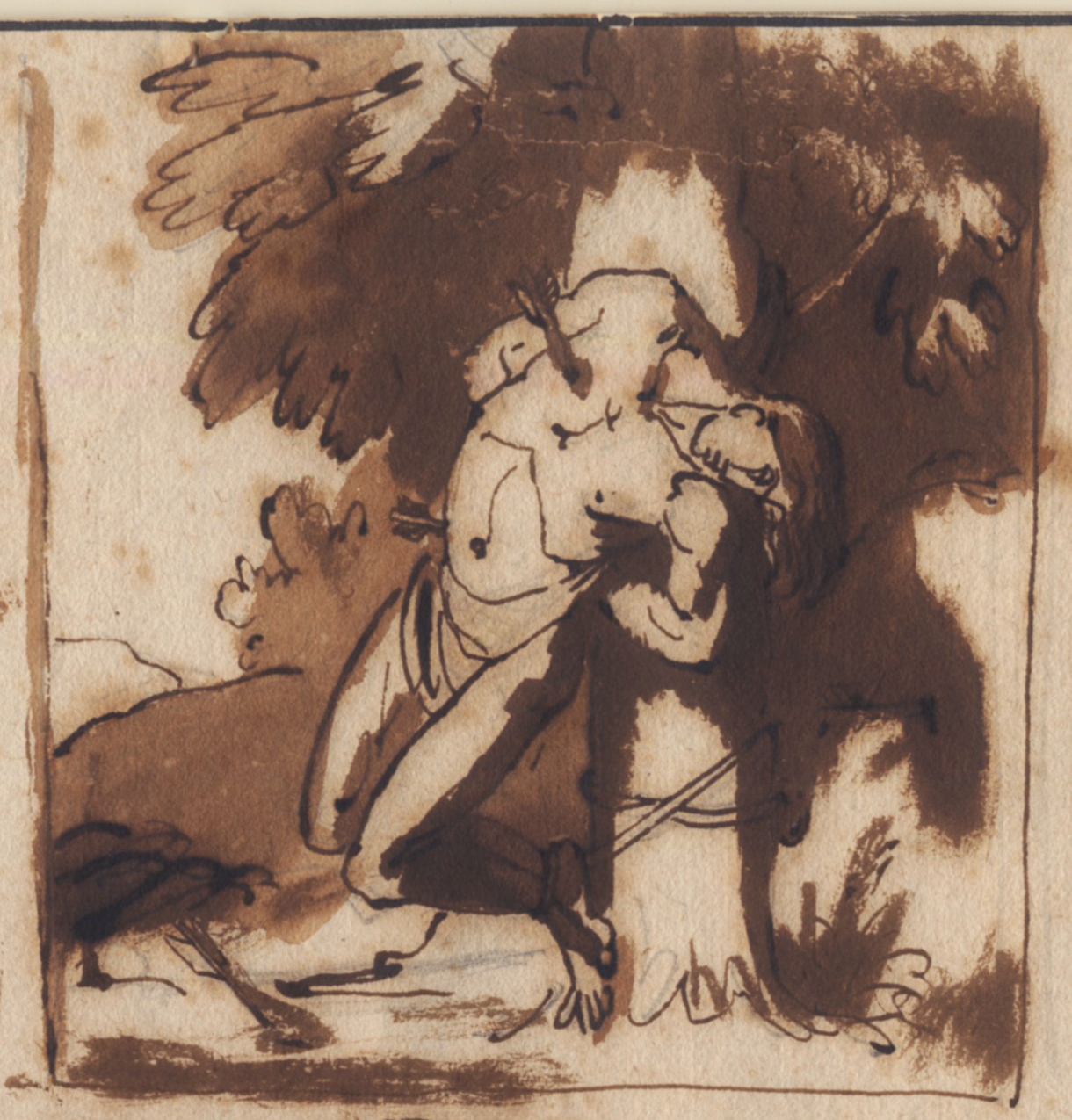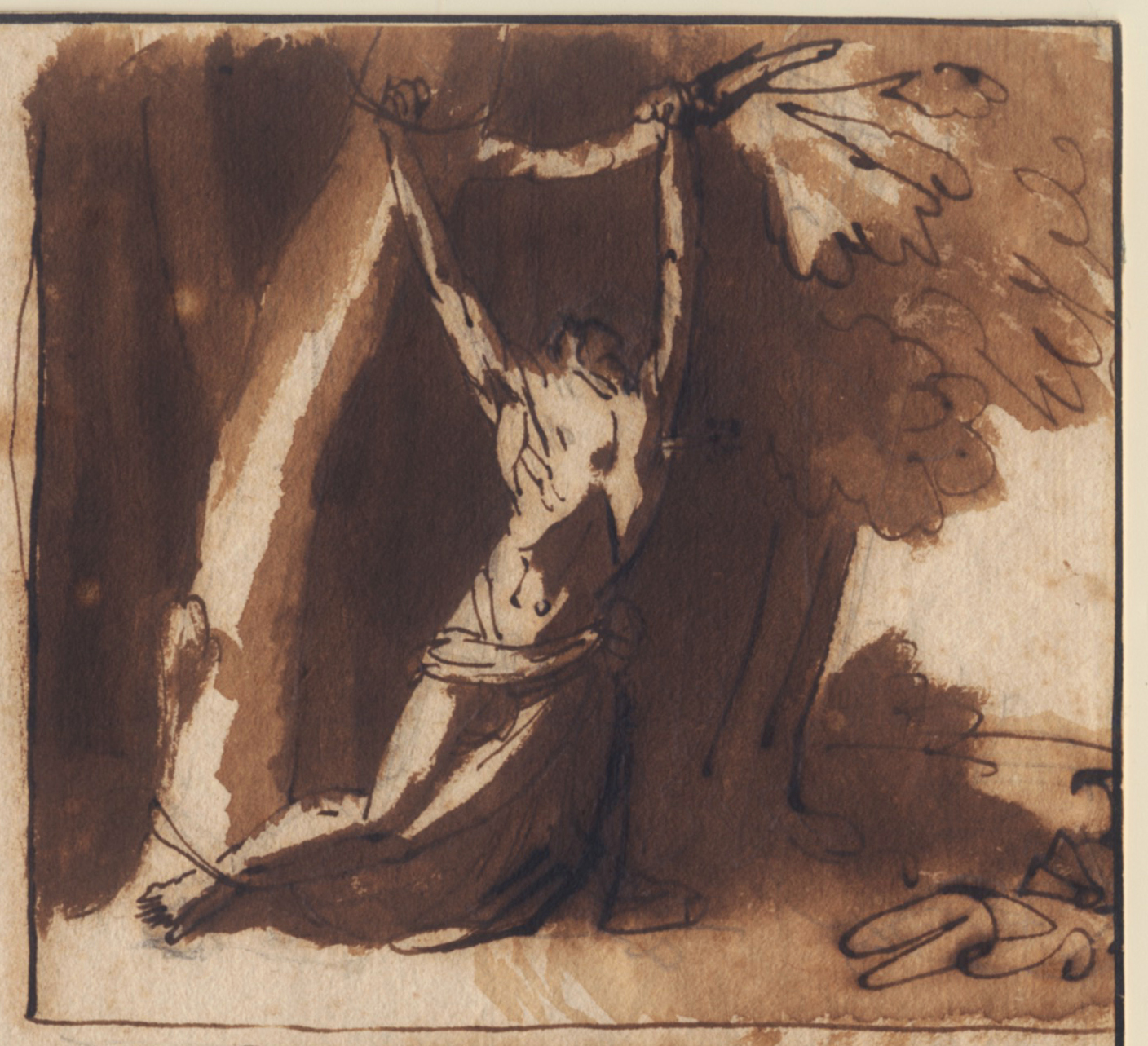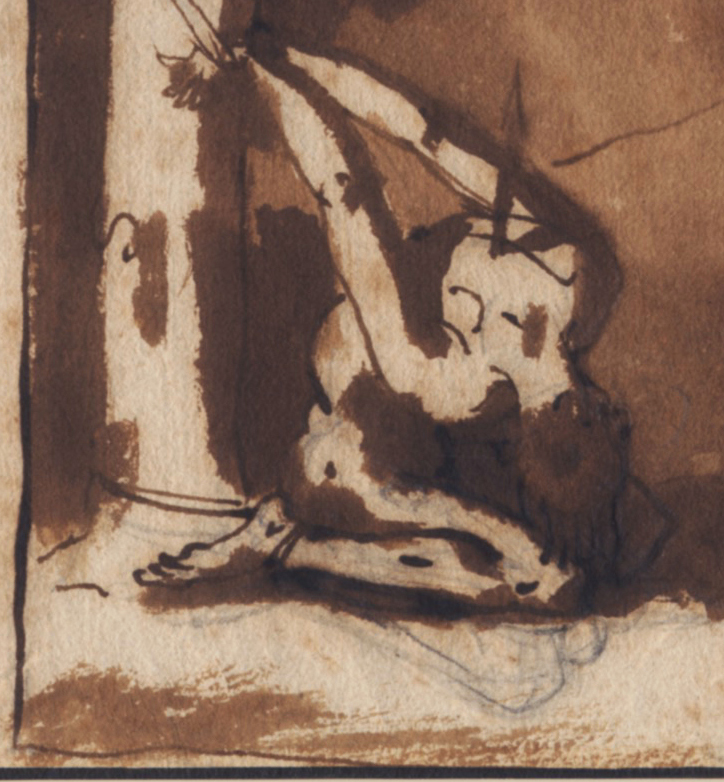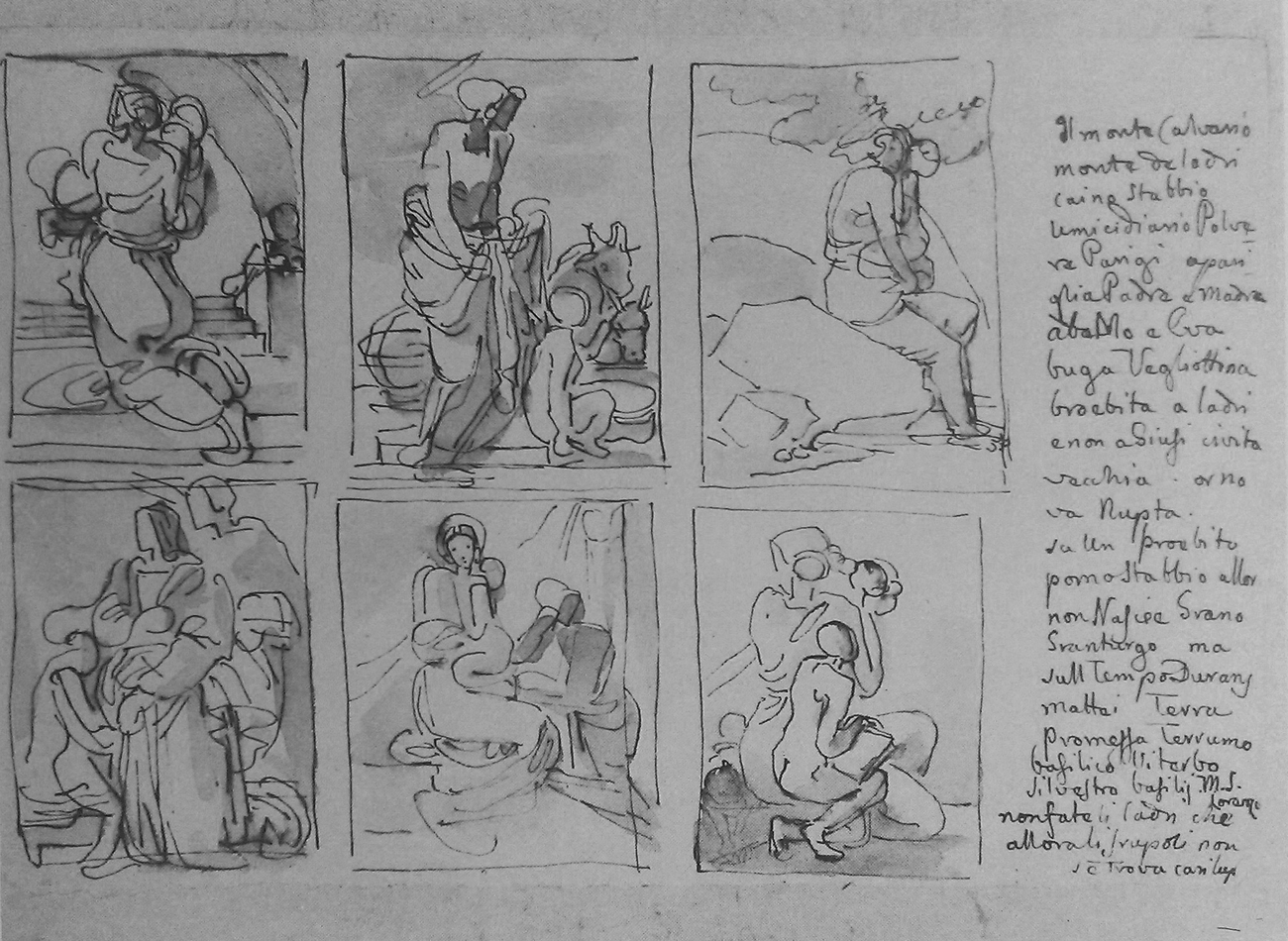FORTUNATO DURANTI (Montefortino 1785 – 1863 Montefortino)
Fortunato Duranti (Montefortino 1785 – 1863 Montefortino)
Six Studies for a St Sebastian
Graphite, pen and brown ink, brown wash, black ink framing lines, 208 x 322 mm (8.2 x 12.7 inch)
Provenance
Private collection, Germany
***
Fortunato Duranti, whose father was a shoemaker, was sent by his uncle, the artist Domenico Conti (1740–1818), to study with a Camaldolese monk at the Monastery of Grotte di Massacci near Iesi.1 The Cardinal Luigi Ercolani later brought him to Rome, where he studied with Abbot Conti, who taught in the tradition of Pompeo Batoni. While in Rome, he befriended Tommaso Minardi. He also worked in Giovanni Bazzani’s studio, where he met Pietro Benvenuti and Vincenzo Cammuccini, with whom he explored the city’s treasures.
Duranti suffered many personal tragedies and reacted violently agasint the Neoclassical movement in Rome and its dependence on Antiquity and Classical models. Instead he developed his own idiosyncratic style, often reducing figures to simple geometric shapes, and covering his drawings with enigmatic symbols and inscriptions. His eccentricity and startlingly modern approach to art have long been misunderstood, but his undoubtable genius has recently been undergoing somewhat of a Renaissance, especially with the major exhibition dedicated to him in Fermo in 2014.
Duranti was an active and vigorous draughtsman, although his drawings rarely relate to larger enterprises. Groups of his drawings are preserved in the Biblioteca Spezioli in Fermo, the Gabinetto Nazionale in Rome, and in the Cooper-Hewitt Smithsonian Design Museum in New York. Duranti frequently drew several versions of a composition on one sheet, as is also the case here, showing the artist’s mind feverishly at work exploring ideas. A comparable sheet with six compositions of the Virgin and Child and the Holy Family is preserved in the Biblioteca Comunale in Fermo (see fig.).2 The poses of St Sebastian in the present sheet are particularly dramatic, heightened by the spontaneous use of wash and Duranti’s characteristic ‘stile quadrato’, reminiscent of Luca Cambiaso (1527–1585).3
SOLD
1. For the artist, see: Stefano Papetti (ed.), La mente mia s’invola: Fortunato Duranti: artista visionario fra le Marche e Roma (1787–1863), exh. cat. Fermo (Palazzo dei Priori) 2014 and Luigi Dania and Mina Gregori, Fortunato Duranti, Milan 1984.
2. Pen and brown ink, brown wash, 298 x 448 mm; inv. no. 1273; see Dania and Gregori, op. cit., pp. 80-81, cat. no. 62, repr. Other sheets with multiple studies by Duranti were formerly in the Epton Collection, England, later with Stanza del Borgo, Milan, see their exh. cat. Tenebre e luci: l’arte del Duranti, Milan 1977, cat. no. 17, repr.
3. The term was first proposed in connection with Duranti’s graphic work by Emilio Lavagnino in 1955.
